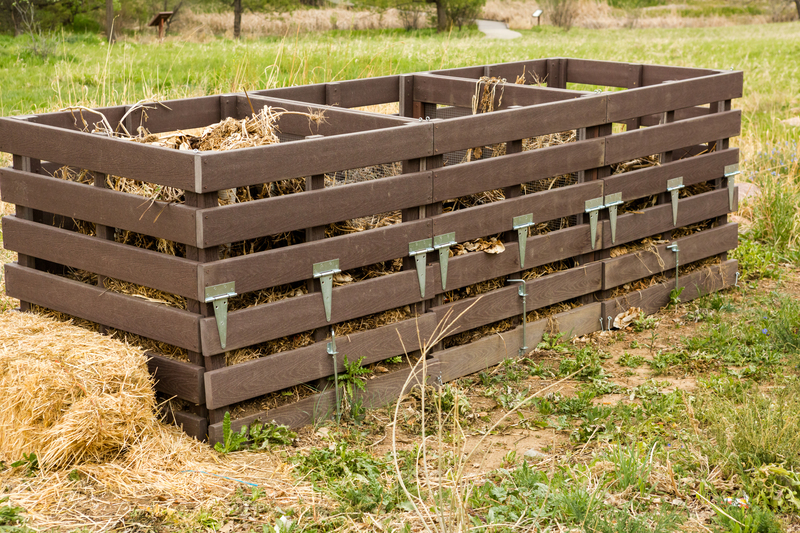The Ultimate Guide to Disposing of Pots and Pans
Pots and pans are kitchen essentials that serve us for years, often enduring daily use and a variety of recipes. However, even the best cookware comes to the end of its life, leaving us with the question: how should you dispose of old pots and pans? If you're looking for the most environmentally-friendly, safe, and responsible ways to say goodbye to your cookware, you've come to the right place.
This comprehensive guide will walk you through everything you need to know about disposing of old pots and pans--from recycling and donating to reusing and upcycling. We'll also answer frequently asked questions and provide expert tips for each method. Let's dive in!
When Is It Time to Dispose of Pots and Pans?
Before tossing your cookware, it's important to determine if disposal is truly necessary. Here are some common signs it's time to part ways with your pots and pans:
- Warping: The base or sides are noticeably bent, causing uneven heating.
- Scratched Nonstick Surface: Nonstick coatings are flaking or deeply scratched, risking contamination.
- Rust or Corrosion: Extensive rust that can't be scrubbed off, or pitting in the metal.
- Loose Handles: Handles can't be tightened or safely fixed.
- Discoloration and Burnt Residue: Severe stains or burnt-on food that can't be removed.
If your pots and pans exhibit these signs, it's likely time for them to retire. But what should you do next? Read on for the best pot and pan disposal methods.

Are Pots and Pans Recyclable?
The recyclability of pots and pans depends on their material and the recycling facilities available in your area. Most cookware is made from materials like:
- Stainless Steel
- Cast Iron
- Aluminum
- Copper
- Teflon-coated / Nonstick
- Ceramic
Generally, most metal pots and pans are potentially recyclable. However, those with nonstick coatings, plastic handles, or ceramic finishes may pose complications. Let's break down the best approaches based on cookware type.
How to Recycle Metal Pots and Pans
Metals such as stainless steel, aluminum, cast iron, and copper are usually accepted at scrap metal recycling centers. Here's how to recycle them effectively:
- Remove non-metal parts like plastic handles or glass lids, if possible.
- Clean the cookware to remove food residue.
- Contact your local recycling center or municipality to confirm they accept cookware and to learn about drop-off procedures.
- Drop off at a scrap yard or recycling depot.
Important tip: Many curbside recycling programs do not accept pots and pans because the items are too bulky or not compatible with sorting equipment. Always confirm with your local service before placing cookware in your recycling bin.
Can Nonstick or Teflon-Coated Cookware Be Recycled?
Nonstick pans are more challenging to recycle due to their Teflon or PTFE coatings. Some facilities--such as specialty scrap metal recyclers--may accept them if the coating is removed. However, it can be labor-intensive to separate the coating from the metal base.
Best practices:
- Check your local recycling guidelines to see if they accept Teflon pans.
- If not, inquire if they can accept the bare metal after the coating is removed.
- If you can't recycle locally, consider reusing, donating, or upcycling the pan (see below).
What About Ceramic and Enameled Cookware?
Ceramic dishes and enameled pots usually cannot be recycled with standard glass or scrap metal due to their unique materials and melting points. Contact your local household waste facility to ask if they can process these items; otherwise, explore creative reuse options (covered later in this guide).
Eco-Friendly Disposal Options for Pots and Pans
1. Donate Usable Cookware
Just because your pots and pans are old for you doesn't mean they're useless to everyone! Many organizations, shelters, and thrift stores gladly accept kitchenware that's still functional. Donating pots and pans is a great way to reduce waste and help others.
Here are some places to consider:
- Local thrift stores (Salvation Army, Goodwill, St. Vincent de Paul)
- Homeless or women's shelters
- Community kitchens
- Charity organizations
- Schools or community centers (sometimes for cooking classes)
Pro tip: Clean your cookware thoroughly before donating and ensure it's in safe, usable condition--no flaking nonstick or deeply rusted pots.
2. Sell or Give Away For Free
Online marketplaces and local community groups are perfect for finding new homes for your gently used pots and pans. Try these platforms:
- Facebook Marketplace
- Craigslist
- Freecycle
- Nextdoor
- Local Buy Nothing groups
Double Check: Always provide accurate descriptions and photos, mentioning any defects or unusual wear. Many people are happy to take worn pots or pans for DIY projects.
3. Repurpose or Upcycle Old Cookware
If your old cookware is no longer suited for the stove but still structurally sound, why not get creative? Repurposing pots and pans gives them new life and reduces waste. Here are some ideas:
- Planters: Drill holes in the bottom and use as unique plant pots for indoor or outdoor gardens.
- Storage Containers: Organize craft supplies, hardware, or office items.
- Wall Decor: Old pans can become artistic wall hangings or clocks.
- Serving Trays: Stainless steel or enamel pans can be cleaned and used as rustic serving trays.
- Bakeware for Crafts: Use old muffin tins or cake pans for paint palettes, bead organizers, or even bird feeders.
Get crafty: Upcycling lets you personalize your home and extend the usefulness of your cookware.
4. Bring to a Scrap Metal Facility
If your cookware is beyond repair or cannot be reused, a scrap metal recycling center is often the best option. Many centers buy aluminum, stainless steel, and copper by weight--even if pots and pans are well-worn.
- Remove as much non-metal material as possible.
- Sort by metal type for possible higher payouts.
- Call ahead to confirm accepted items and any preparation needed.
Some large cities hold special recycling days for household goods, including cookware--check with your municipality for details.
Common Questions About Disposing of Pots and Pans
Is It Safe to Throw Old Pots and Pans in the Trash?
Though sometimes unavoidable, throwing cookware in the trash should be a last resort. Metal cookware takes hundreds of years to break down in landfills, and nonstick coatings may release toxins. If no recycling or reuse options are available, ensure pans are safe (no sharp edges or broken parts) before trashing.
Can You Recycle Pots and Pans With Curbside Recycling?
Curbside recycling programs rarely accept large metal objects or cookware, as they can damage sorting machinery. Always check local guidelines. A dedicated scrap metal facility is a much better choice.
Are There Retail Cookware Recycling Programs?
Some retailers offer take-back or recycling programs for old pots and pans, especially when you purchase new cookware. Tefal (T-Fal) and select locations of William-Sonoma, for example, occasionally provide such services. Contact your local stores to ask about their options.
Is It Safe to Donate Nonstick Pans?
Only if the nonstick surface is intact and not flaking or chipped. Damaged nonstick coatings can release toxic compounds and should be properly recycled or disposed of instead of donated.
Tips for Prolonging the Life of Your Pots and Pans
The best way to reduce landfill waste? Make your cookware last as long as possible!
- Hand wash when possible--avoid abrasive pads and harsh detergents.
- Use the correct utensils (wood, silicone) to prevent scratching nonstick coatings.
- Dry thoroughly to prevent rust and corrosion.
- Store with TLC--avoid stacking heavily to prevent warping.
- Follow the manufacturer's care instructions for each piece.

Disposing of Pots and Pans: Summary Checklist
- Assess the condition: Can it be reused, donated, or sold?
- Recycle if possible: Take to a scrap metal facility or special recycling event.
- Repurpose creatively: Upcycle into household or garden items.
- Dispose responsibly: If no other options, ensure safe handling before trashing.
- Consult local guidelines: Municipalities differ in accepted materials and programs.
Final Thoughts: Making the Responsible Choice
Disposing of pots and pans the right way helps protect the environment, supports your local community, and even fuels your creativity. Whether you choose to donate, recycle, reuse, or upcycle, every small action counts in reducing kitchen waste. By following this ultimate guide, you ensure you're making an informed decision aligned with your values--while enjoying a cleaner, more organized kitchen space.
Remember: A sustainable future starts at home, one pot and pan at a time.